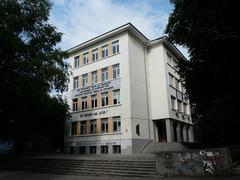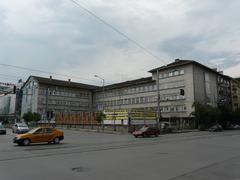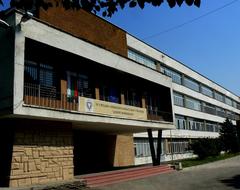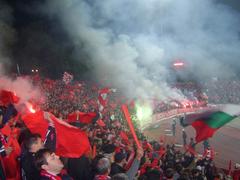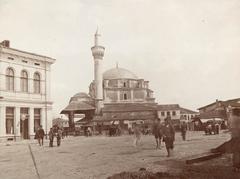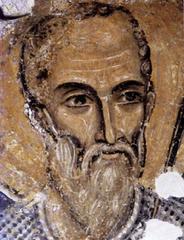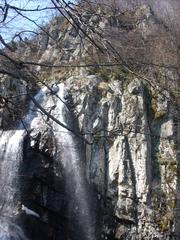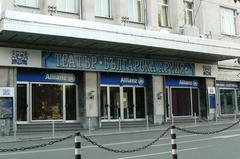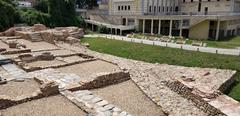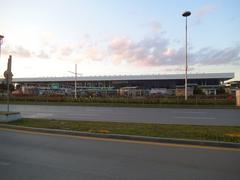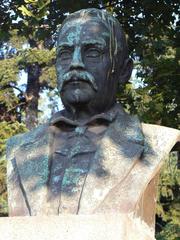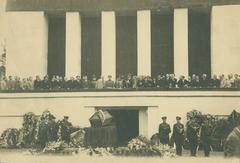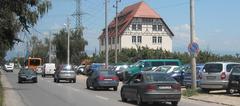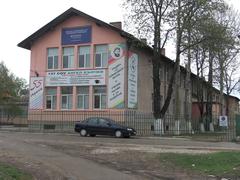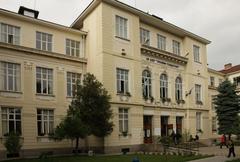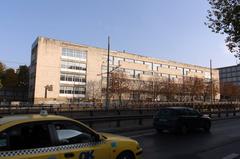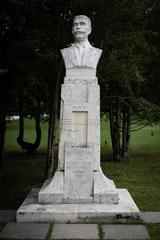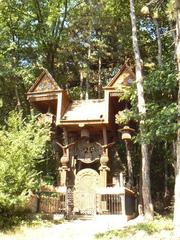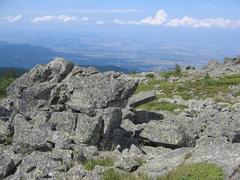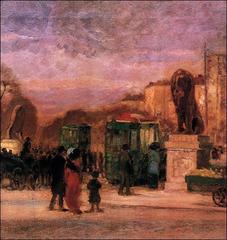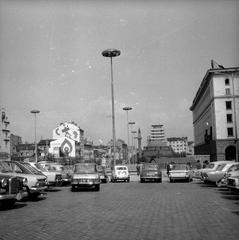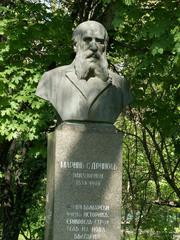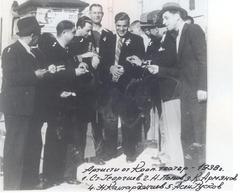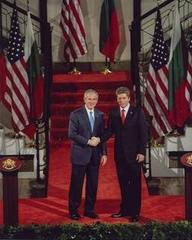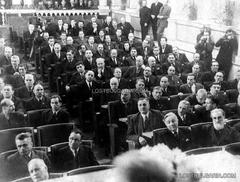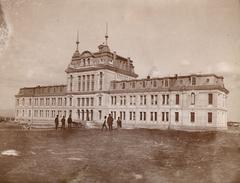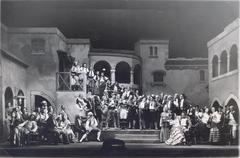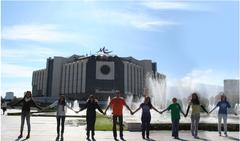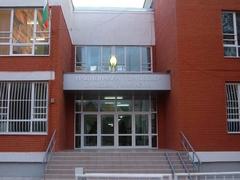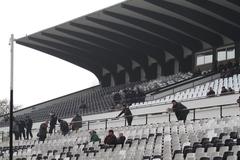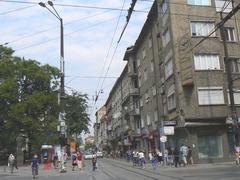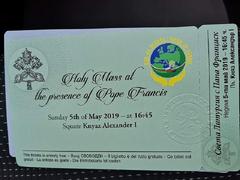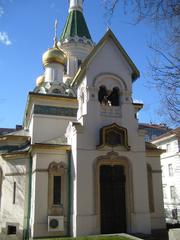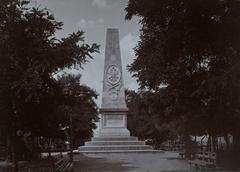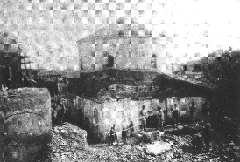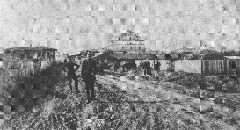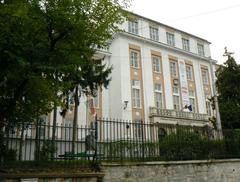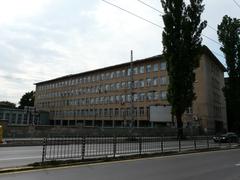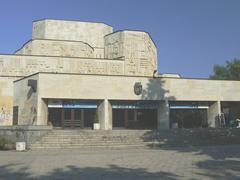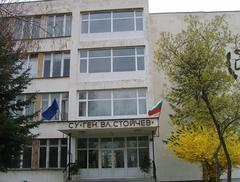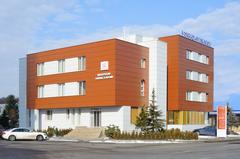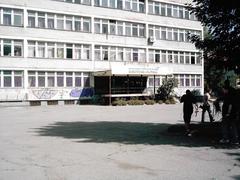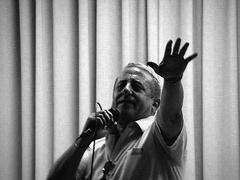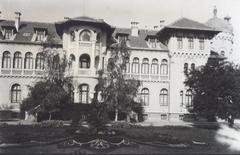
Visiting St. Alexander Nevsky Cathedral in Sofia, Bulgaria
Date: 17/07/2024
Introduction
The St. Alexander Nevsky Cathedral, known locally as Храм-паметник Св. Александър Невски, stands as one of the most iconic landmarks in Sofia, Bulgaria. This architectural marvel is not only a significant religious site but also a symbol of Bulgaria’s rich historical and cultural heritage. Constructed to honor the Russian soldiers who died during the Russo-Turkish War of 1877-1878, the cathedral embodies the deep historical ties between Bulgaria and Russia. Its grandiose design, characterized by a blend of Byzantine and Russian Revival styles, was the brainchild of Russian architect Alexander Pomerantsev. The cathedral’s central dome, rising to 45 meters, and its bell tower, reaching 53 meters, are adorned with intricate mosaics and carvings, making it a visual masterpiece (Bulgarian Orthodox Church).
Beyond its architectural splendor, the St. Alexander Nevsky Cathedral holds immense cultural significance. It serves as the main cathedral of the Bulgarian Orthodox Church and is a national memorial to the soldiers who perished in the Russo-Turkish War. Its crypt houses a museum dedicated to Bulgarian icons and religious artifacts, providing visitors with a comprehensive overview of Bulgaria’s religious history. In recent years, the cathedral has undergone several restoration efforts to preserve its artistic and architectural integrity, ensuring that it remains a major tourist attraction and a place of worship (St. Alexander Nevsky Cathedral).
This comprehensive guide aims to provide visitors with all the necessary information to explore this iconic landmark. From its historical significance and architectural features to practical visiting tips and nearby attractions, this guide covers everything you need to know for an enriching visit to the St. Alexander Nevsky Cathedral.
Table of Contents
- Introduction
- History of Храм-паметник Св. Александър Невски
- Architectural and Artistic Features
- Visitor Information
- Frequently Asked Questions (FAQ)
- Conclusion
History of Храм-паметник Св. Александър Невски
Origins and Construction
The St. Alexander Nevsky Cathedral was built to honor the Russian soldiers who died during the Russo-Turkish War of 1877-1878, which led to Bulgaria’s liberation from Ottoman rule. The decision to construct the cathedral was made in 1879, shortly after the war ended, but the actual construction did not begin until 1904. The cathedral was completed in 1912 and consecrated in 1924.
The architectural design of the cathedral was the work of Russian architect Alexander Pomerantsev, who was known for his eclectic style that combined elements of Byzantine and Russian Revival architecture. The cathedral’s design features a cross-domed basilica with a central dome rising to a height of 45 meters (148 feet) and a bell tower that reaches 53 meters (174 feet). The exterior is adorned with intricate mosaics and carvings, while the interior is richly decorated with Italian marble, Brazilian onyx, and alabaster.
Significance in Bulgarian History
The St. Alexander Nevsky Cathedral holds immense historical and cultural significance for Bulgaria. It stands as a symbol of the country’s liberation and the close historical ties between Bulgaria and Russia. The cathedral is named after St. Alexander Nevsky, a medieval Russian prince and military leader who is revered as a saint in the Eastern Orthodox Church. This dedication underscores the gratitude of the Bulgarian people towards Russia for its role in their liberation.
The cathedral also serves as a national memorial to the soldiers who lost their lives in the Russo-Turkish War. The names of the fallen soldiers are inscribed on the walls of the cathedral, and a special crypt beneath the church houses a museum dedicated to Bulgarian icons and religious artifacts.
Role During the Communist Era
During the communist era in Bulgaria (1946-1989), the St. Alexander Nevsky Cathedral faced significant challenges. The communist regime was officially atheist and sought to diminish the influence of the church in Bulgarian society. Despite this, the cathedral remained a symbol of national identity and resilience. It continued to function as a place of worship and a site of pilgrimage for many Bulgarians.
In 1955, the cathedral was declared a cultural monument of national importance, which helped to protect it from potential damage or neglect. The cathedral also played a role in the revival of religious practices in Bulgaria during the late 1980s and early 1990s, as the country transitioned from communism to democracy.
Recent Developments and Preservation Efforts
In recent years, the St. Alexander Nevsky Cathedral has undergone several restoration and preservation efforts to maintain its architectural and artistic integrity. These efforts have included the cleaning and restoration of the exterior mosaics, the repair of the central dome, and the conservation of the interior frescoes and icons.
The cathedral remains an active place of worship and a major tourist attraction in Sofia. It is also the seat of the Bulgarian Orthodox Church and the official residence of the Patriarch of Bulgaria. The cathedral’s crypt, which houses the Museum of Bulgarian Icons, has been expanded and modernized to provide visitors with a comprehensive overview of Bulgaria’s rich religious and cultural heritage.
Architectural and Artistic Features
The St. Alexander Nevsky Cathedral is renowned for its stunning architectural and artistic features. The central dome is gilded with gold leaf, and the exterior is clad in white and green marble. The cathedral’s façade is decorated with intricate mosaics depicting scenes from the Bible and the lives of saints. The interior is equally impressive, with a vast nave that can accommodate up to 5,000 worshippers.
One of the most striking features of the cathedral is its iconostasis, a large screen that separates the nave from the sanctuary. The iconostasis is made of Italian marble and is adorned with icons painted by some of the most renowned Bulgarian and Russian artists of the time. The cathedral also houses a collection of valuable religious artifacts, including a piece of the True Cross and relics of St. Alexander Nevsky.
Visitor Information
Visiting Hours and Tickets
The St. Alexander Nevsky Cathedral is open to the public daily from 7:00 AM to 7:00 PM. There is no entrance fee, but donations are welcome to support the ongoing preservation efforts. Visitors are encouraged to dress modestly and respect the sanctity of the space.
Travel Tips
- Accessibility: The cathedral is accessible to visitors with disabilities, with ramps and designated areas to ensure a comfortable visit.
- Nearby Attractions: The cathedral is located in the heart of Sofia, making it easily accessible by public transportation. Nearby attractions include the National Art Gallery, the National Archaeological Museum, and the Ivan Vazov National Theatre, all of which provide additional insights into Bulgaria’s rich cultural and historical heritage.
- Best Time to Visit: Early mornings or late afternoons are ideal times to visit to avoid large crowds and fully appreciate the cathedral’s serene atmosphere.
For more information, visitors can refer to the official website of the St. Alexander Nevsky Cathedral and the Bulgarian Orthodox Church.
Frequently Asked Questions (FAQ)
-
What are the visiting hours for St. Alexander Nevsky Cathedral?
- The cathedral is open daily from 7:00 AM to 7:00 PM.
-
Is there an entrance fee for St. Alexander Nevsky Cathedral?
- There is no entrance fee, but donations are welcome to support the ongoing preservation efforts.
-
What should I wear when visiting the cathedral?
- Visitors are encouraged to dress modestly and respect the sanctity of the space.
-
How can I get to the cathedral?
- The cathedral is located in the heart of Sofia and is easily accessible by public transportation.
Conclusion
The St. Alexander Nevsky Cathedral is more than just a religious site; it is a testament to Bulgaria’s rich history and cultural heritage. Whether you are a history buff, an architecture enthusiast, or a spiritual seeker, a visit to this iconic landmark in Sofia is a must. For more updates and information, be sure to check out the official websites and follow on social media.



